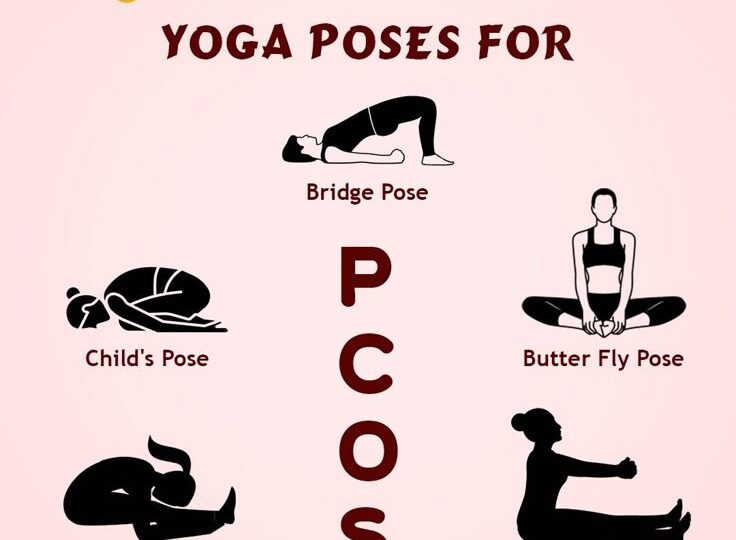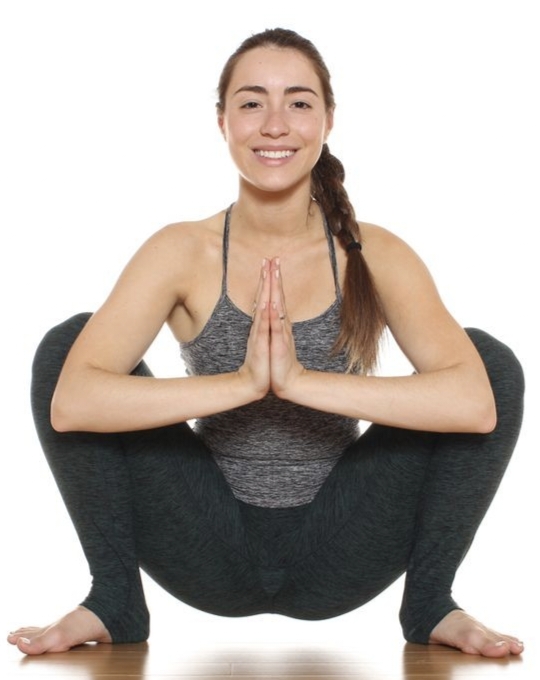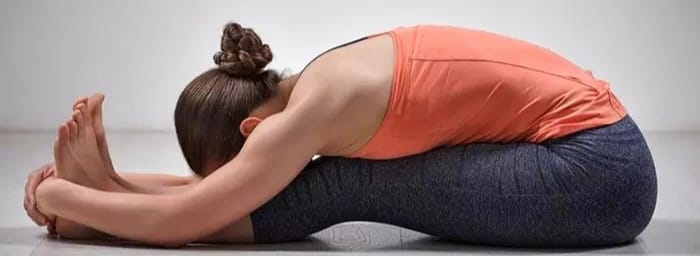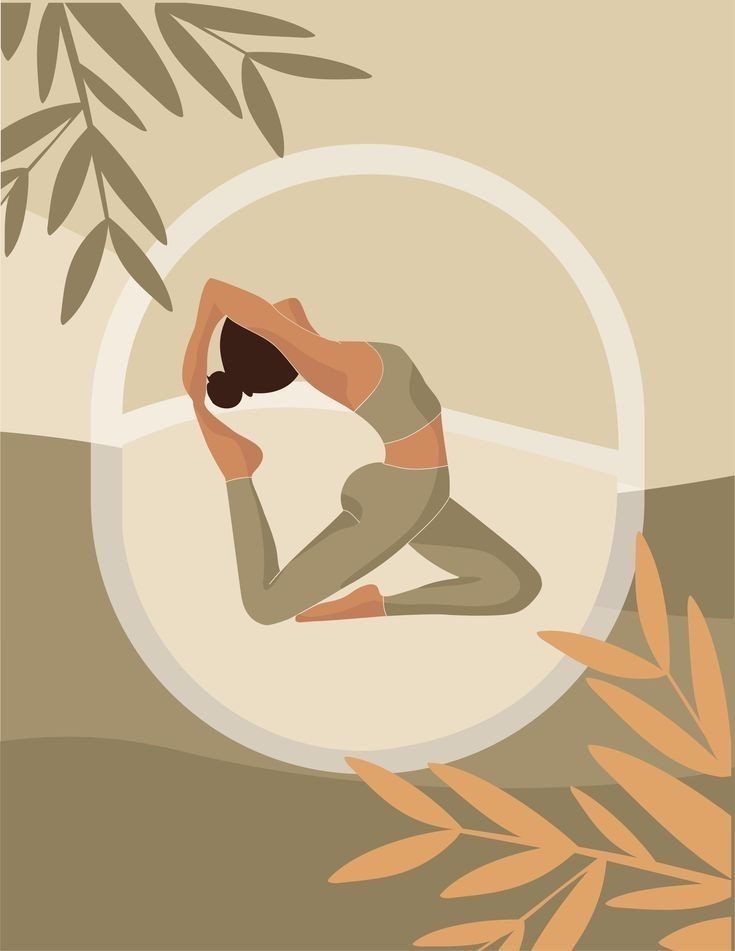🧘♀️ Yoga for PCOS/PCOD – Best Poses for Hormonal Balance & Reproductive Health
March 26, 2025 | by paruli6722@gmail.com

Discover the best yoga for PCOS/PCOD to balance hormones, improve metabolism, and enhance reproductive health. Learn effective yoga techniques, lifestyle tips, and holistic remedies to naturally manage PCOS symptoms. 🧘♀️💖
What is PCOS/PCOD
💠 Polycystic Ovary Syndrome (PCOS) and Polycystic Ovary Disorder (PCOD) are common hormonal disorders affecting women of reproductive age. These conditions lead to irregular periods, weight gain, acne, infertility, and other health issues. Yoga is a natural and effective way to manage PCOS/PCOD symptoms by balancing hormones, improving metabolism, and reducing stress.
🌿 How Does Yoga Help with PCOS/PCOD? Yoga enhances blood circulation, stimulates the endocrine system, and reduces insulin resistance, which are key factors in managing PCOS/PCOD. Regular yoga practice can regulate menstrual cycles, improve fertility, and reduce stress levels.
🧘♀️ Best Yoga Poses for PCOS/PCOD
✅ #✨ Malasana (Garland Pose) for PCOS/PCOD – Strengthens the Pelvic Floor

Polycystic Ovary Syndrome (PCOS) and Polycystic Ovary Disorder (PCOD) are common hormonal disorders affecting many women worldwide. Yoga, especially Malasana (Garland Pose), has been proven beneficial in managing symptoms and improving overall reproductive health. This article will explore how Malasana can help with PCOS/PCOD, its benefits, step-by-step practice, precautions, and tips for maximum effectiveness.
🔄 How Malasana (Garland Pose) Helps with PCOS/PCOD?
Malasana is a deep squat yoga pose that works wonders for women dealing with PCOS/PCOD. It enhances blood circulation in the pelvic region, regulates hormonal balance, strengthens the pelvic floor, and improves digestion—all of which play crucial roles in managing PCOS symptoms.
💡 Benefits of Malasana for PCOS/PCOD
- 👩⚕️ Improves Reproductive Health: Stimulates the ovaries and uterus, helping to regulate menstrual cycles.
- 💧 Enhances Blood Circulation: Increases blood flow to the pelvic region, reducing ovarian cysts’ severity.
- 🧘🏻♀️ Strengthens the Pelvic Floor: Supports the uterus, bladder, and bowel, improving overall reproductive health.
- 🌱 Detoxifies the Body: Aids digestion and promotes detoxification, helping to balance hormones.
- 💪 Boosts Metabolism: Helps in weight loss, which is crucial for managing PCOS symptoms.
- 🧠 Relieves Stress and Anxiety: Reduces cortisol levels and promotes relaxation, lowering stress-induced hormonal imbalances.
🚶🏻♀️ How to Perform Malasana (Step-by-Step Guide)
Follow these simple steps to practice Malasana correctly:
- Start in a Standing Position: Stand with your feet slightly wider than hip-width apart.
- Lower into a Squat: Slowly bend your knees and lower your hips towards the ground.
- Keep Your Heels on the Floor: If your heels lift off, place a folded towel or yoga block under them.
- Join Your Hands in Namaste: Bring your palms together at the chest and press your elbows against the inner thighs.
- Engage Your Core: Keep your spine straight, chest lifted, and engage your core muscles.
- Hold the Pose: Stay in this position for 30-60 seconds while taking deep breaths.
- Release Gently: Slowly straighten your legs and return to a standing position.
⚠️ Precautions & Modifications
- 💪 Weak Knees or Ankle Pain? Place a yoga block under your hips for support.
- ⚠️ Avoid During Pregnancy: If you are pregnant, consult a doctor before practicing Malasana.
- 🧠 Avoid Overstretching: If you feel discomfort, reduce the depth of the squat.
- 💨 Breathe Properly: Avoid holding your breath; maintain a steady breathing pattern.
💡 Pro Tips for Best Results
- Practice Malasana daily for at least 5 minutes.
- Combine it with other yoga poses like Bhujangasana (Cobra Pose), Supta Baddha Konasana (Reclining Bound Angle Pose), and Setu Bandhasana (Bridge Pose) for better PCOS management.
- Maintain a balanced diet and stay hydrated.
- Engage in mindful meditation to reduce stress and enhance hormonal balance.
🌟 Final Thoughts
Malasana is a powerful yoga pose that can significantly help women suffering from PCOS/PCOD. With regular practice, it strengthens the pelvic floor, improves reproductive health, and reduces symptoms naturally. Pair it with a healthy lifestyle, and you will experience positive changes in your overall well-being.
✅ #✨ Paschimottanasana (Seated Forward Bend) for PCOS/PCOD – Boosts Metabolism

PCOS (Polycystic Ovary Syndrome) and PCOD (Polycystic Ovary Disorder) are common hormonal imbalances affecting women, often leading to weight gain, irregular periods, and metabolic disorders. Yoga can be an effective way to manage these symptoms naturally. One such powerful pose is Paschimottanasana (Seated Forward Bend), which helps boost metabolism, regulate hormones, and improve overall well-being.
🔄 How Paschimottanasana Helps with PCOS/PCOD?
Paschimottanasana is a deep forward bend that stimulates the abdominal organs, enhances digestion, and improves metabolism. It also calms the nervous system, reducing stress—a major trigger for PCOS symptoms.
💡 Key Benefits of Paschimottanasana for PCOS/PCOD
- 👩⚕️ Stimulates the Reproductive System: Enhances ovarian function and regulates menstrual cycles.
- 🌟 Boosts Metabolism: Improves digestion and helps with weight management.
- 🧘🏻♀️ Reduces Belly Fat: Activates abdominal muscles and promotes fat loss.
- 🧠 Regulates Hormonal Balance: Encourages the proper functioning of the endocrine glands.
- 🌱 Detoxifies the Body: Stimulates the liver and kidneys to remove toxins.
- 🌊 Reduces Stress and Anxiety: Helps lower cortisol levels, preventing hormonal fluctuations.
🚶🏻♀️ How to Perform Paschimottanasana (Step-by-Step Guide)
Follow these steps to practice Paschimottanasana correctly:
- Start in a Seated Position: Sit with your legs extended straight in front of you.
- Inhale and Lengthen the Spine: Keep your back straight and engage your core.
- Exhale and Bend Forward: Hinge from the hips and reach towards your toes.
- Hold Your Feet or Ankles: If you can’t reach, hold your shins or use a yoga strap.
- Keep Your Spine Long: Avoid rounding your back; focus on deepening the stretch gradually.
- Breathe Deeply and Hold: Stay in this pose for 30-60 seconds while taking slow, deep breaths.
- Release Gently: Inhale, lift your torso, and return to a seated position.
⚠️ Precautions & Modifications
- 💪 Tight Hamstrings? Bend your knees slightly to avoid strain.
- ⚠️ Avoid During Pregnancy: Consult a doctor before practicing if pregnant.
- 💨 Breathe Properly: Never force the stretch; maintain a steady breath cycle.
- 🧐 Use a Yoga Strap: If flexibility is limited, a strap can help deepen the stretch gradually.
💡 Pro Tips for Best Results
- Practice Paschimottanasana daily for at least 5 minutes.
- Combine with Malasana (Garland Pose), Baddha Konasana (Butterfly Pose), and Bhujangasana (Cobra Pose) for enhanced benefits.
- Maintain a healthy diet rich in fiber and protein.
- Stay hydrated and include mindfulness meditation to reduce stress.
🌟 Final Thoughts
Paschimottanasana is a powerful yoga pose that helps boost metabolism, regulate hormones, and improve overall reproductive health. With regular practice and a balanced lifestyle, this pose can be an effective natural remedy for managing PCOS/PCOD symptoms.
✅ #✨ Bhujangasana (Cobra Pose) for PCOS/PCOD – Enhances Ovarian Function

Polycystic Ovary Syndrome (PCOS) and Polycystic Ovary Disorder (PCOD) affect many women worldwide, leading to hormonal imbalances, irregular periods, and metabolic issues. Yoga offers a natural way to manage these conditions, and Bhujangasana (Cobra Pose) is one of the most effective asanas for improving ovarian function and overall reproductive health.
🔄 How Bhujangasana Helps with PCOS/PCOD?
Bhujangasana stretches and stimulates the abdominal organs, including the ovaries, helping to regulate hormonal balance. It also increases blood circulation to the pelvic region, promoting better reproductive health.
💡 Key Benefits of Bhujangasana for PCOS/PCOD
- 🌸 Enhances Ovarian Function: Improves blood flow to the ovaries, supporting hormonal balance.
- 🌟 Regulates Menstrual Cycle: Helps in maintaining regular and healthy periods.
- 🧘🏻♀️ Strengthens Abdominal Muscles: Tones the lower abdomen, reducing fat around the waistline.
- 🧠 Boosts Metabolism: Stimulates digestion and reduces bloating.
- 🌱 Relieves Stress and Anxiety: Activates the parasympathetic nervous system, lowering cortisol levels.
- 💪 Improves Posture: Enhances spinal flexibility and strengthens the back muscles.
🚶🏻♀️ How to Perform Bhujangasana (Step-by-Step Guide)
Follow these steps to practice Bhujangasana correctly:
- Lie on Your Stomach: Place your palms beside your shoulders and keep your legs together.
- Inhale and Lift Your Chest: Press your palms into the floor and raise your upper body while keeping your elbows slightly bent.
- Engage Your Core: Keep your shoulders relaxed and stretch your neck upward.
- Hold the Pose: Stay in this position for 20-30 seconds while breathing deeply.
- Exhale and Release: Slowly lower your chest and head back to the floor.
- Repeat: Practice this pose 3-5 times for maximum benefits.
⚠️ Precautions & Modifications
- 💪 Lower Back Pain? Avoid excessive arching and engage your core muscles.
- ⚠️ Avoid During Pregnancy: Not recommended for pregnant women.
- 💨 Breathe Properly: Maintain a steady breathing rhythm to maximize benefits.
- 👀 Modify If Needed: If full extension is difficult, keep your elbows bent and lift only partially.
💡 Pro Tips for Best Results
- Practice Bhujangasana daily in the morning on an empty stomach.
- Combine with Paschimottanasana (Seated Forward Bend), Malasana (Garland Pose), and Baddha Konasana (Butterfly Pose) for improved PCOS management.
- Maintain a nutritious diet and stay hydrated.
- Incorporate meditation to manage stress and hormonal fluctuations.
🌟 Final Thoughts
Bhujangasana is a powerful yoga pose that enhances ovarian function, regulates hormonal balance, and improves overall reproductive health. When practiced regularly with a healthy lifestyle, it can be an effective natural remedy for PCOS/PCOD symptoms.
✅ #✨ Dhanurasana (Bow Pose) for PCOS/PCOD – Balances Hormones

Polycystic Ovary Syndrome (PCOS) and Polycystic Ovary Disorder (PCOD) are common hormonal conditions that affect women’s reproductive health, leading to irregular periods, weight gain, and hormonal imbalances. Yoga, particularly Dhanurasana (Bow Pose), plays a significant role in managing these symptoms naturally by stimulating the endocrine system and improving overall hormonal balance.
🔄 How Dhanurasana Helps with PCOS/PCOD?
Dhanurasana is a deep backbend that stretches the entire body, massages the abdominal organs, and stimulates the reproductive glands. It helps in regulating hormones, improving digestion, and boosting metabolism.
💡 Key Benefits of Dhanurasana for PCOS/PCOD
- 🌿 Balances Hormones: Stimulates the endocrine glands, including the ovaries and adrenal glands, to regulate hormonal function.
- 💪 Strengthens the Abdominal Region: Massages the uterus and ovaries, helping to reduce menstrual discomfort.
- 🔥 Boosts Metabolism: Aids in weight loss by improving digestion and eliminating toxins.
- 🩸 Enhances Blood Circulation: Increases oxygen supply to the reproductive organs, reducing inflammation.
- 🧘 Reduces Stress & Anxiety: Lowers cortisol levels, which helps in maintaining hormonal equilibrium.
- 🏋️ Improves Flexibility & Posture: Strengthens the spine, back, and core muscles.
🏃♀️ How to Perform Dhanurasana (Step-by-Step Guide)
Follow these steps to practice Dhanurasana correctly:
- Lie on Your Stomach: Keep your legs hip-width apart and arms beside your body.
- Bend Your Knees: Bring your heels close to your glutes.
- Hold Your Ankles: Reach back with your hands and grasp your ankles firmly.
- Inhale & Lift Up: Raise your chest and thighs off the floor, creating a bow-like shape.
- Engage Your Core: Maintain the stretch while keeping your gaze forward.
- Hold for 20-30 Seconds: Breathe deeply and stay relaxed.
- Exhale & Release: Gently lower your body back to the floor and relax.
⚠️ Precautions & Modifications
- 🦵 Lower Back Issues? Avoid excessive arching and use a soft yoga mat for support.
- ⚠️ Avoid During Pregnancy: This pose is not recommended for pregnant women.
- 🧘 New to Yoga? Try lifting only your chest initially and gradually increase flexibility.
- 💨 Breathe Smoothly: Never hold your breath; maintain a steady inhalation and exhalation pattern.
💡 Pro Tips for Best Results
- Practice Dhanurasana daily on an empty stomach for maximum benefits.
- Combine with Bhujangasana (Cobra Pose), Paschimottanasana (Seated Forward Bend), and Malasana (Garland Pose) for better PCOS/PCOD management.
- Maintain a balanced diet with hormone-regulating foods.
- Engage in meditation or pranayama to reduce stress levels.
✨ Final Thoughts
Dhanurasana is an excellent yoga pose for balancing hormones, improving metabolism, and supporting reproductive health. With consistent practice and a holistic lifestyle approach, it can significantly help manage PCOS/PCOD symptoms naturally.
✅#✨ Baddha Konasana (Butterfly Pose) for PCOS/PCOD – Improves Fertility

Polycystic Ovary Syndrome (PCOS) and Polycystic Ovary Disorder (PCOD) are common hormonal conditions affecting women’s reproductive health. Baddha Konasana (Butterfly Pose) is a powerful yoga asana that helps regulate hormones, enhance fertility, and improve overall reproductive function naturally.
🔄 How Baddha Konasana Helps with PCOS/PCOD?
Baddha Konasana is a deep hip-opening pose that increases blood circulation to the pelvic region, stimulates the ovaries, and relieves menstrual discomfort. It helps in regulating the menstrual cycle and promoting fertility.
💡 Key Benefits of Baddha Konasana for PCOS/PCOD
- 🌸 Enhances Fertility: Improves ovarian function by stimulating blood flow to the reproductive organs.
- 🩸 Regulates Menstrual Cycle: Helps balance hormones and ease irregular periods.
- 🧘♀️ Relieves Stress & Anxiety: Reduces cortisol levels, preventing hormonal imbalances.
- 🔥 Boosts Metabolism: Aids in digestion and detoxification, reducing bloating and weight gain.
- 💪 Strengthens the Pelvic Floor: Helps in toning the uterus and reducing menstrual cramps.
- 🏋️ Improves Hip Flexibility: Increases mobility and reduces stiffness in the lower body.
🏃♀️ How to Perform Baddha Konasana (Step-by-Step Guide)
Follow these steps to practice Baddha Konasana correctly:
- Sit Comfortably: Sit on the floor with your spine straight and legs extended.
- Bring Soles Together: Bend your knees and bring the soles of your feet together.
- Hold Your Feet: Grip your feet firmly with your hands.
- Press Knees Down Gently: Try to bring your knees closer to the floor without force.
- Flap Your Knees (Optional): Move your knees up and down like butterfly wings.
- Hold for 30-60 Seconds: Maintain steady breathing and stay relaxed.
- Release Gently: Slowly extend your legs back to the starting position.
⚠️ Precautions & Modifications
- 🦵 Knee Pain? Use a cushion under your thighs for support.
- ⚠️ Avoid During Pregnancy: Consult a doctor before practicing.
- 🧘♀️ Limited Flexibility? Keep your feet farther from the groin initially.
- 💨 Breathe Smoothly: Do not force the stretch; maintain a steady breath cycle.
💡 Pro Tips for Best Results
- Practice Baddha Konasana daily for at least 5 minutes.
- Combine with Dhanurasana (Bow Pose), Bhujangasana (Cobra Pose), and Malasana (Garland Pose) for enhanced PCOS/PCOD relief.
- Maintain a nutrient-rich diet to support hormonal balance.
- Include meditation and pranayama to manage stress effectively.
✨ Final Thoughts
Baddha Konasana is an excellent yoga pose for improving fertility, balancing hormones, and promoting reproductive health. When practiced regularly, it can be an effective natural remedy for managing PCOS/PCOD symptoms.
🌞 Additional Lifestyle Tips for Managing PCOS/PCOD
🥗 1. Follow a Balanced Diet
Eat fiber-rich foods, healthy fats, and protein to regulate blood sugar levels and improve metabolism.
🏃♀️ 2. Engage in Regular Exercise
Incorporate walking, strength training, or yoga into your daily routine to maintain a healthy weight.
🍵 3. Hydrate and Detox
Drink plenty of water and herbal teas like spearmint or green tea to support hormone balance.
😴 4. Get Quality Sleep
Prioritize 7-9 hours of sleep to regulate stress hormones and support overall well-being.
🧘 5. Manage Stress with Meditation
Practice mindfulness and breathing exercises to reduce stress and enhance mental health.
🏡 Home Remedies for PCOS/PCOD
- 🥒 Drink Warm Lemon Water: Helps detoxify the body and regulate metabolism.
- 🍵 Consume Spearmint Tea: Reduces excess androgens and helps balance hormones.
- 🥜 Include Flaxseeds in Diet: Rich in omega-3 fatty acids that support hormonal health.
- 🌿 Drink Fenugreek (Methi) Water: Helps in improving insulin sensitivity.
- 🥛 Take Cinnamon Powder with Warm Milk: Aids in regulating menstrual cycles.
- 🍎 Apple Cider Vinegar: Helps reduce blood sugar levels and supports weight loss.
- 🥦 Eat Fiber-Rich Foods: Green leafy vegetables and whole grains improve digestion and hormone balance.
- 🧘♀️ Practice Stress-Relief Techniques: Meditation and deep breathing exercises reduce cortisol levels.
- 🏃♀️ Regular Exercise: A combination of yoga, strength training, and cardio improves insulin sensitivity.
The most commonly asked questions:
🌺1. Can yoga cure PCOS/PCOD?
Yoga cannot cure PCOS/PCOD, but it can help manage and alleviate some symptoms associated with the condition. Healthline
2.Which yoga poses are beneficial for PCOS/PCOD?
Poses such as Baddha Konasana (Butterfly Pose), Bhujangasana (Cobra Pose), and Dhanurasana (Bow Pose) are considered beneficial. MyOva
3.How does yoga help in managing PCOS/PCOD symptoms?
Yoga may help decrease testosterone levels and alleviate symptoms of anxiety and depression in individuals with PCOS. PMC+6Healthline+6krsnaphysioplus.com+6
4.How often should one practice yoga to see benefits for PCOS/PCOD?
Regular practice is recommended, but the exact frequency can vary.
5.Are there specific breathing exercises (pranayama) recommended for PCOS/PCOD?
Pranayama exercises like Alternate Nostril Breathing can aid in hormonal balance and relaxation. Fitelo
Can yoga help with weight management in PCOS/PCOD?
Yoga can stimulate metabolism and aid in weight management for individuals with PCOS. PCOS Weight Loss
Is it safe to practice yoga during menstruation if I have PCOS/PCOD?
Practicing yoga during menstruation is generally considered safe and can help alleviate menstrual discomfort. PCOS Weight Loss
Are there any precautions to consider when practicing yoga with PCOS/PCOD?
It’s advisable to consult with a healthcare provider before starting any new exercise regimen, including yoga.
6.Can yoga improve fertility in individuals with PCOS/PCOD?
Yoga may help in managing symptoms that affect fertility, but it’s important to consult with a healthcare provider for comprehensive fertility advice.
7.Is yoga more effective than other forms of exercise for managing PCOS/PCOD?
Yoga offers unique benefits such as stress reduction and hormonal balance, but incorporating various forms of exercise may provide comprehensive benefits. 🧘♀️💖
✨ Conclusion
Yoga is a powerful and natural way to manage PCOS/PCOD by promoting hormonal balance, improving reproductive health, and reducing stress. Regular practice of yoga poses like Baddha Konasana (Butterfly Pose), Bhujangasana (Cobra Pose), Dhanurasana (Bow Pose), and Malasana (Garland Pose) can help regulate menstrual cycles, enhance fertility, and support overall well-being.
When combined with a healthy diet, stress management techniques, and lifestyle modifications, yoga can be an effective tool for alleviating PCOS symptoms and improving quality of life. Consistency is key—practice daily, stay active, and embrace a holistic approach to wellness.
Start your PCOS-friendly yoga journey today and take a step toward better hormonal health! 🌸💪😊
RELATED POSTS
View all



